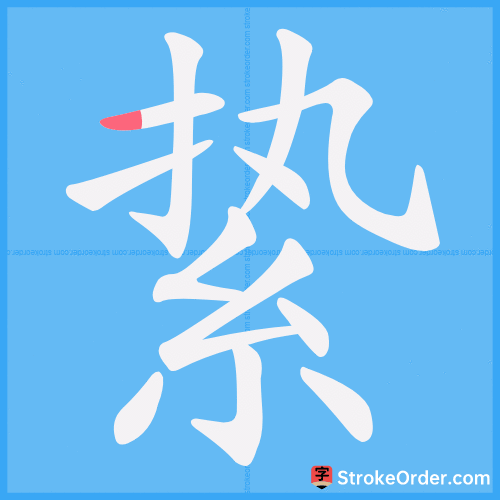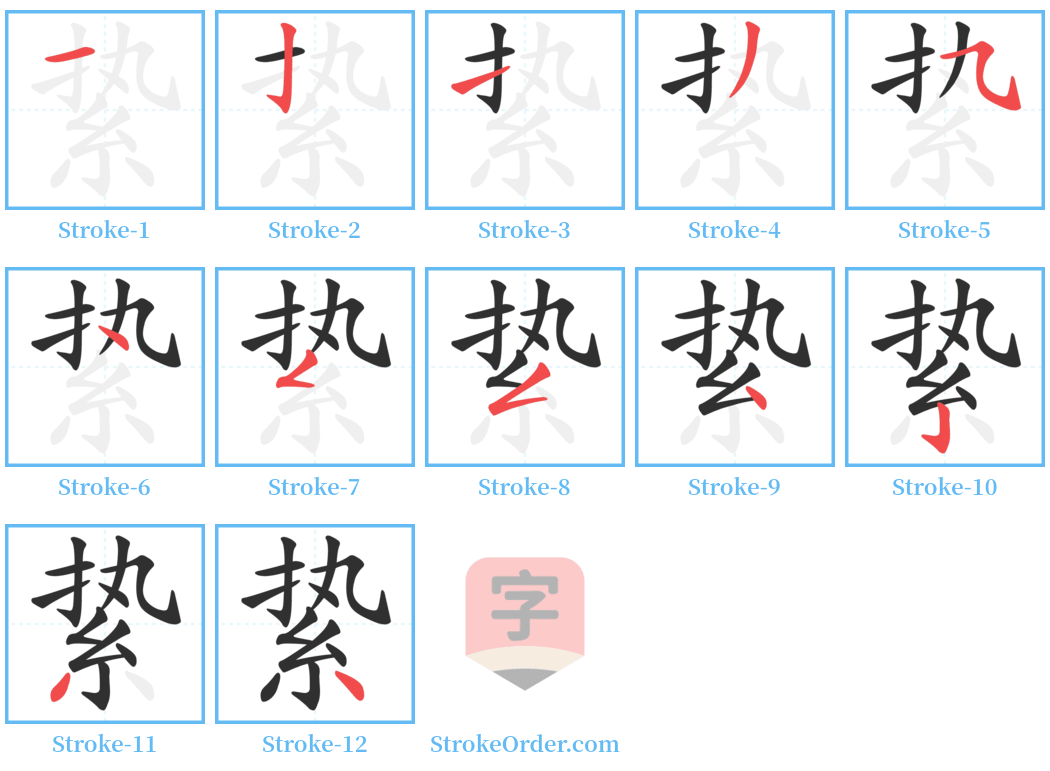絷 Stroke Order
Animated Stroke Order of 絷

Stroke Order Diagrams for 絷

Step-by-Step Handwriting Guide for 絷

Learn to Write Chinese Characters with Video Tutorials
Watch the video of writing the Chinese character "絷", learn the correct stroke order (笔顺) of the character "絷", and master the standard way of writing the character "絷".
Free Printable Handwriting Practice with Stroke Order: 絷
Printable Writing Practice Worksheet of "絷" in Portrait Orientation (Tian Zi Ge)

Printable Writing Practice Worksheet of "絷" in Landscape Orientation (Tian Zi Ge)

Information of 絷
Pinyin
zhí
Radical
糸
Strokes
12 strokes
Usage
★★★
Definition
connect / tie up
絷 (zhí)
1. To tie up, to bind.
- 拴,捆:~维 (1. Originally meant tying up a guest's horse to keep the guest; later refers to attracting and retaining talent; 2. To bind.)
2. Horse reins.
3. To detain, to imprison.
- 拘捕,拘禁:~拘.
絷 (zhí)
Verb
- 【Original meaning】: To tie up a horse's foot.
- 【Character formation】: Pictophonetic, composed of 糸 (mì) and the phonetic element.
1. Same as the original meaning (En: tie up with rope or chain).
- 引用:
1. 《诗·小雅·白驹》: 絷之维之. (Another interpretation: To bind/entrap.)
2. 韦应物《洛都游寓》: 轩冕诚可慕,所忧在絷维.
- 例如: 絷韁 (to tie up reins); 絷维 (metaphor for retaining talent).
2. To detain; to restrain (En: fetter a prisoner; take into custody; restrain).
- 引用:
1. 《左传·成公九年》: 南冠而絷者谁也?
- 例如: 絷拘 (to bind and detain); 絷囚 (prisoner); 絷缚 (to bind; to capture).
絷 (zhí)
Noun
1. A rope that ties up a horse's foot (En: reins).
- 引用:
1. 《诗·周颂·有客》: 言授之絷,以絷其马.
2. 《左传·成公二年》: 执絷马前.
- 例如: 絷维 (the rope used for tying up a horse. It extends the meaning to binding.).